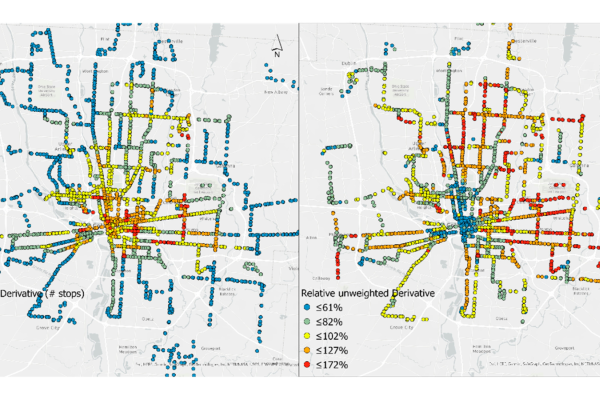Research: Accessibility derivative: Measuring the accessibility contribution of public transit routes

In a new paper in the journal Environment and Planning B: Urban Analytics and City Science, former CURA GRA Luyu Liu and CURA Director Harvey Miller measure the contribution of individual transit routes to the overall public transit accessibility.
Abstract:
Accessibility is one of the most essential objectives of public transit systems as the transit service’s useability and service quality. The accessibility of transit systems as a whole is well understood; however, it is still unclear how each route contributes to the system-wide accessibility. Meanwhile, with a higher risk of disruptions and more uncertainties from climate change and other disruptions, there is an urgent need to systematically study the impacts of service change with the contribution of each route to general accessibility. To address this gap, we introduce the accessibility derivative, a model-agnostic measure of the contribution of each route in a transit system. We define the derivative of a route as the systemwide change in accessibility after removing the route from the system. We demonstrate how to calculate the derivative numerically from widely available public transit schedule and automated passenger count data. The measure reflects the inherent structure of a transit system and reveals the impacts of potential route-level service changes. The results provide firsthand evidence on public transit assessment and planning, including performance assessment, schedule redesign, and planning transfers.
Authors:
Liu, L., & Miller, H. J. (2024). Accessibility derivative: Measuring the accessibility contribution of public transit routes. Environment and Planning B: Urban Analytics and City Science, 0(0). https://doi.org/10.1177/23998083241272098
Read the full study below!
